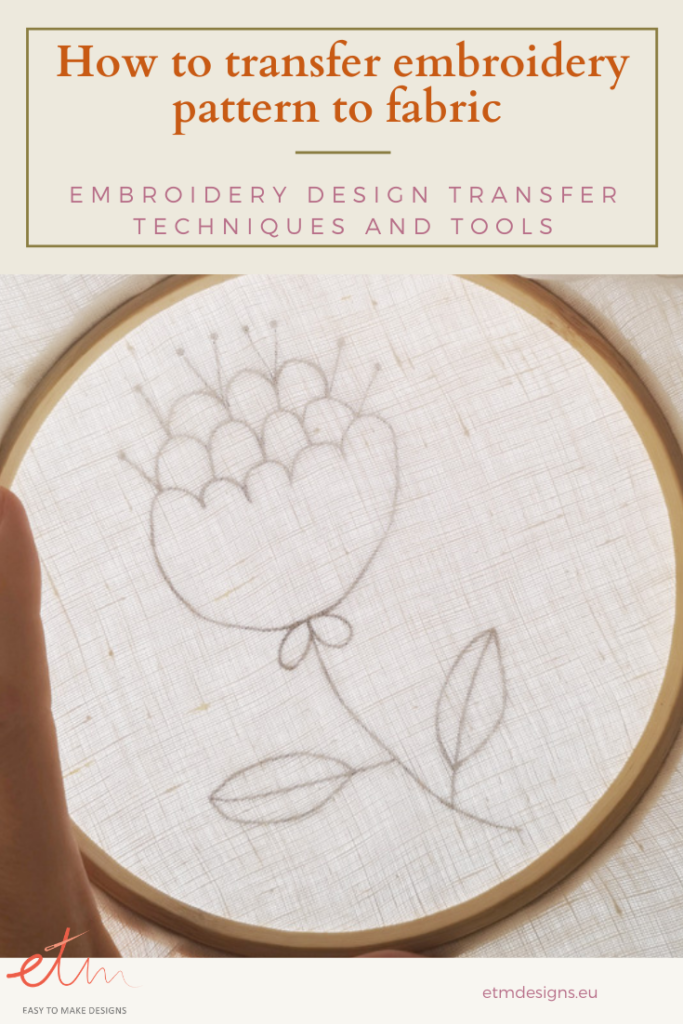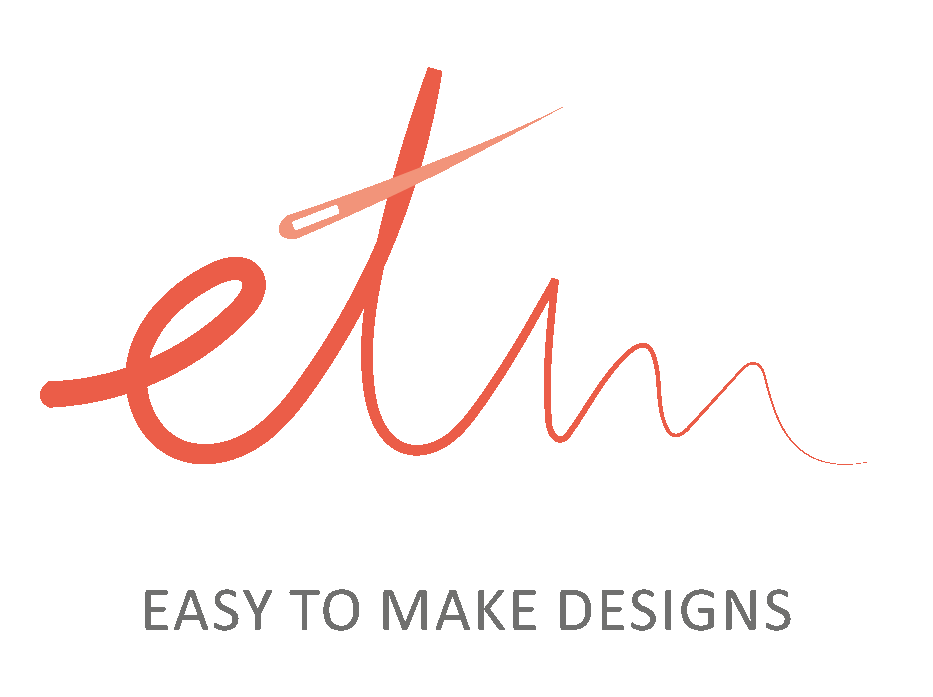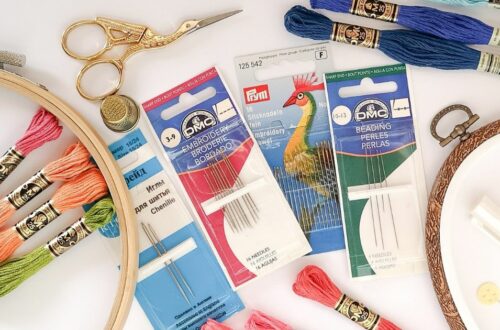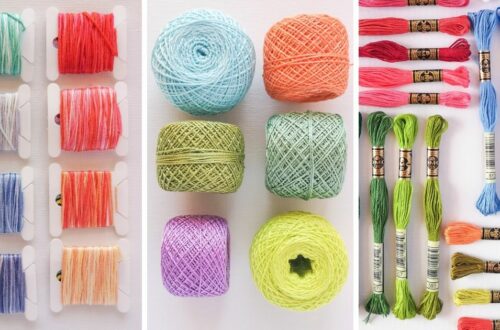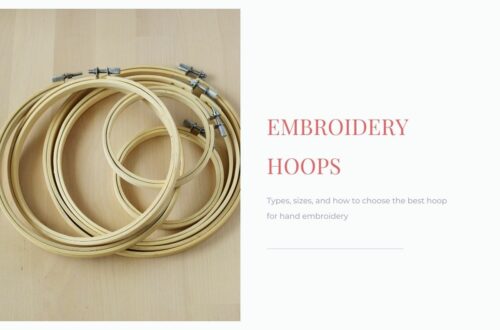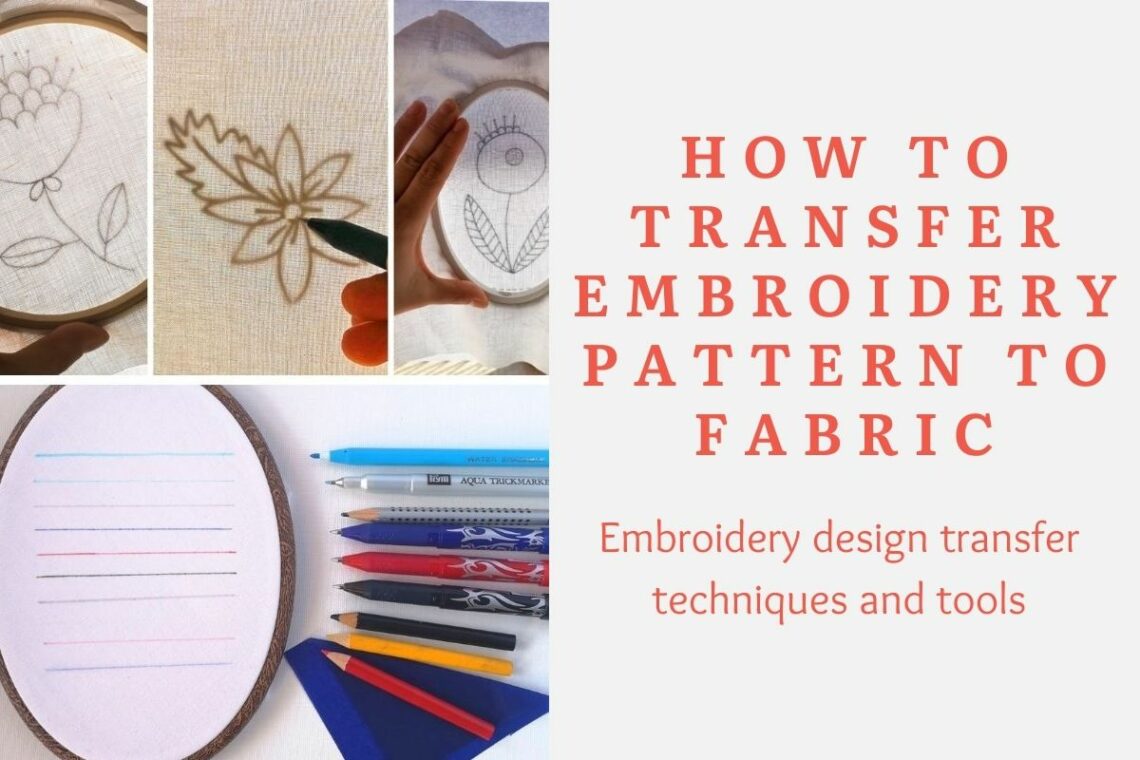
How to transfer embroidery pattern to fabric. Embroidery design transfer techniques and tools
It is so exciting to start a new embroidery project. But before we can dive into the fun part – embroidery, we have to transfer the embroidery pattern to the fabric. So let’s see how we can copy embroidery patterns to material and what techniques and tools are great to transfer the designs.
There are four main embroidery pattern transfer techniques:
- Tracing
- Transferring
- Using a stabilizer
- Drawing a pattern directly on a fabric.
Let’s get more details about each option!
Pattern tracing
By definition, Tracing is a “copy of a drawing or pattern made by drawing over it through a piece of thin, transparent paper” (Cambridge dictionary). Only in hand embroidery, instead of thin, transparent paper, we use a piece of fabric.
The tracing method works best with light-colored and smooth fabrics.
To use the Tracing method, you will need:
- Printed pattern;
- Fabric;
- Light source. You can use a light window or a lightbox as a source of light for tracing;
- Tracing tool (pen or pencil).
You can read the whole article ‘How to transfer a pattern with the lightbox method‘ on this blog or watch a video tutorial HERE.
Pros of Tracing method:
- Simple
- Cheap
- Washable or erasable marks, so you can make adjustments as you go
Cons:
- Not suitable for dark fabrics
- Using a window as a light source can be rather complicated to transfer very detailed patterns.
Embroidery design transfer tools
There are many pens and pencils you can use for tracing the pattern on the fabric. Here is a list of tools I have and use for this method:
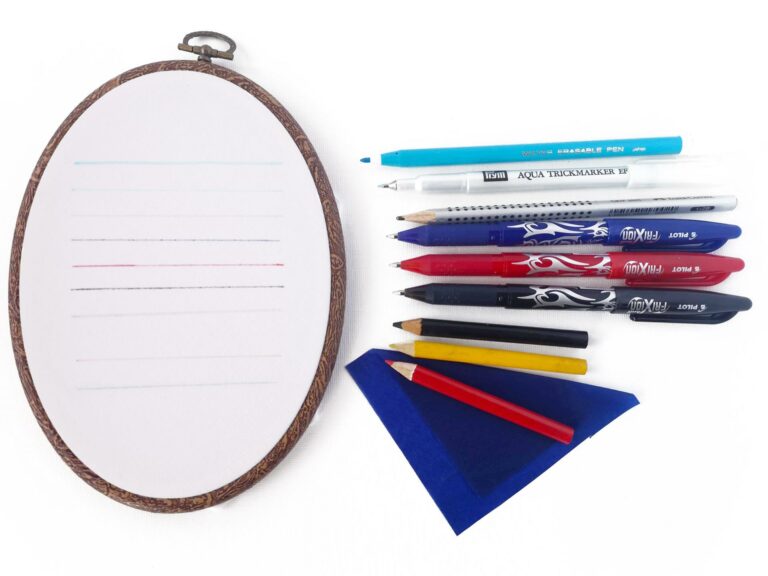
Water-soluble pens (No. 1 and 2 in the photo).
These markers are a fabulous way to trace patterns and transfer designs when embroidering. The marks stay there while you work, but as soon as you wash your finished embroidery, they disappear forever. These pens go in different sizes, so you can choose how thick your drawing line will be.
Pencil (No. 3). Regular lead pencils are nice to use for transferring designs. The markings they make are light, so if you don’t completely cover them with stitches, you probably won’t notice in the end.
Friction pens in different colors (No. 4-6). These are like simple ball pens, but the lines’ marks will disappear with heat (use hair dryer or iron).
Dressmaker pens (No. 7-9). Cheap, simple, washable
Design Transferring
Transferring is when you move a design from one surface to another. This method works well on both dark and light-colored fabrics, but the material has to be relatively smooth to use this method. There are several tools for this method:
- Heat transfer pens and pencils. Print the pattern in reverse form and trace directly on the drawing with a heat transfer pen. Then, place it on the fabric face down, and heat with the iron. The pattern will move to the fabric after a few seconds of heat application.
- Iron – on Transfer paper. Print your design onto this paper, trim to size, and use your iron to transfer the pattern onto your fabric. Follow the manufacturer’s instructions. Remember this critical detail: iron-on transfer designs will be a mirror image when you flip them over and iron them on. That’s why you should use a reverse view of a printable pattern for this method of transfer.
- Carbon paper. Carbon paper for dressmaking comes in different colors to be used both on dark and light fabrics. It is easy to use this method: put the carbon paper (colored side of the transfer paper on the fabric) and then place the design face up over that. Use a ballpoint pen to trace each line to transfer to the material. You may have to go over the lines more than once.
Pros of Transferring method
- The method works well on both light and dark fabrics
- Not expensive, as you can use a carbon paper or transfer pen many times
Cons:
- Some heat transfer pens are permanent and won’t wash away. Hence, you need to be extra careful to cover all the transferred lines with embroidery.
Using a stabilizer for pattern transfer
Sometimes, nor Transferring nor the Tracing method works well. For example, think of dark fabric with texture, embroidery on clothes, or a very detailed pattern that is hard to trace or transfer. In this case, you can use a stabilizer.
The stabilizer for the pattern transfer is an additional layer of “fabric” (it can be sticky or not). You can draw your pattern on it, transfer it, or print it directly from your printer. Place the stabilizer with a design above your fabric and embroider through both layers. After you finish embroidery, submerge your embroidery in lukewarm water, and the stabilizer will disintegrate.
Easy like this! I like to use Solvy stabilizers that are made like stickers.
Pros of the Stabilizer method:
- Very fast and easy
- Works on any type and color of the fabric
- The pattern is not affected by the imperfections of hand drawing.
Cons:
- it is a rather expensive method of transferring the pattern.
Embroidery design transfer technique with tissue paper
This technique is very similar to a stabilizer but is much cheaper. Take a piece of smooth white tissue paper, trace the pattern with a pencil or ballpoint pen, and pin or baste the tissue paper on top of your base fabric. Then, begin stitching just as you would without the paper. Stitch your complete design, running your needle from the wrong side of the material, up to the top through the tissue paper, and then back to the wrong side. Gently tear away the paper in small pieces, being careful not to tug at your stitches. Use tweezers or a blunt needle to pick out any tissue paper bits you cannot remove with your fingers when you have finished. Also, lint remover is excellent for collecting the most minor remaining pieces of tissue paper.
Tools you will need:
- Tissue paper (paper napkin will do nicely)
- Pen or a pencil
- The pattern
Pros of the Tissue paper method:
- Fast and simple
- Cheap
- Works on any type and color of the fabric
Cons:
- If the pattern has many small details, the tissue paper may get ruined before you finish the embroidery
- You need to tear away tissue paper before making filling stitches, as otherwise, it will remain under the stitches.
You can watch a video tutorial of this embroidery design transfer technique HERE.
Drawing the pattern directly on a fabric
If the design is relatively simple, you can use any pens or pencils for tracing mentioned above or from the picture and draw your design directly on the fabric!

Tools for drawing on the dark fabric:
- White water-soluble marking pens (1 and 2 in the photo)
- Chalk pencil (3)
- Dressmaker pen (light colored)
- Dressmakers chalk
Pros of drawing directly on the fabric:
- Fast
- Cheap
- You will get an original design of every piece you embroider
Cons:
- If you want to embroider the exact pattern, this method will not work, unless you are a drawing professional
Let’s finalize
The most popular embroidery design transfer techniques are pattern tracing with a lightbox method, design transferring with heat transfer pens, iron-on paper, carbon paper, and pattern transfer with a stabilizer or tissue paper. Also, we can draw our design directly on the fabric. The best tools for pattern transfer are water-soluble pens, friction pens, pencils, dressmaker chalk, and pens.
Now, when you know the differences between the various embroidery design transfer techniques and tools, which one will you choose for your next project? And how will you remove tracing marks from the fabric after the embroidery is finished?
PS.: If you need some fresh hand embroidery inspiration and ideas, head to the shop of this blog, and choose the pdf embroidery pattern for your next project.
Looking for more hand embroidery education resources?
Read these articles:
- Everything you need to know about hand embroidery needles
- All you need to know about hand embroidery threads and floss
- How to transfer a pattern with the lightbox method
- How to remove tracing marks from fabric
